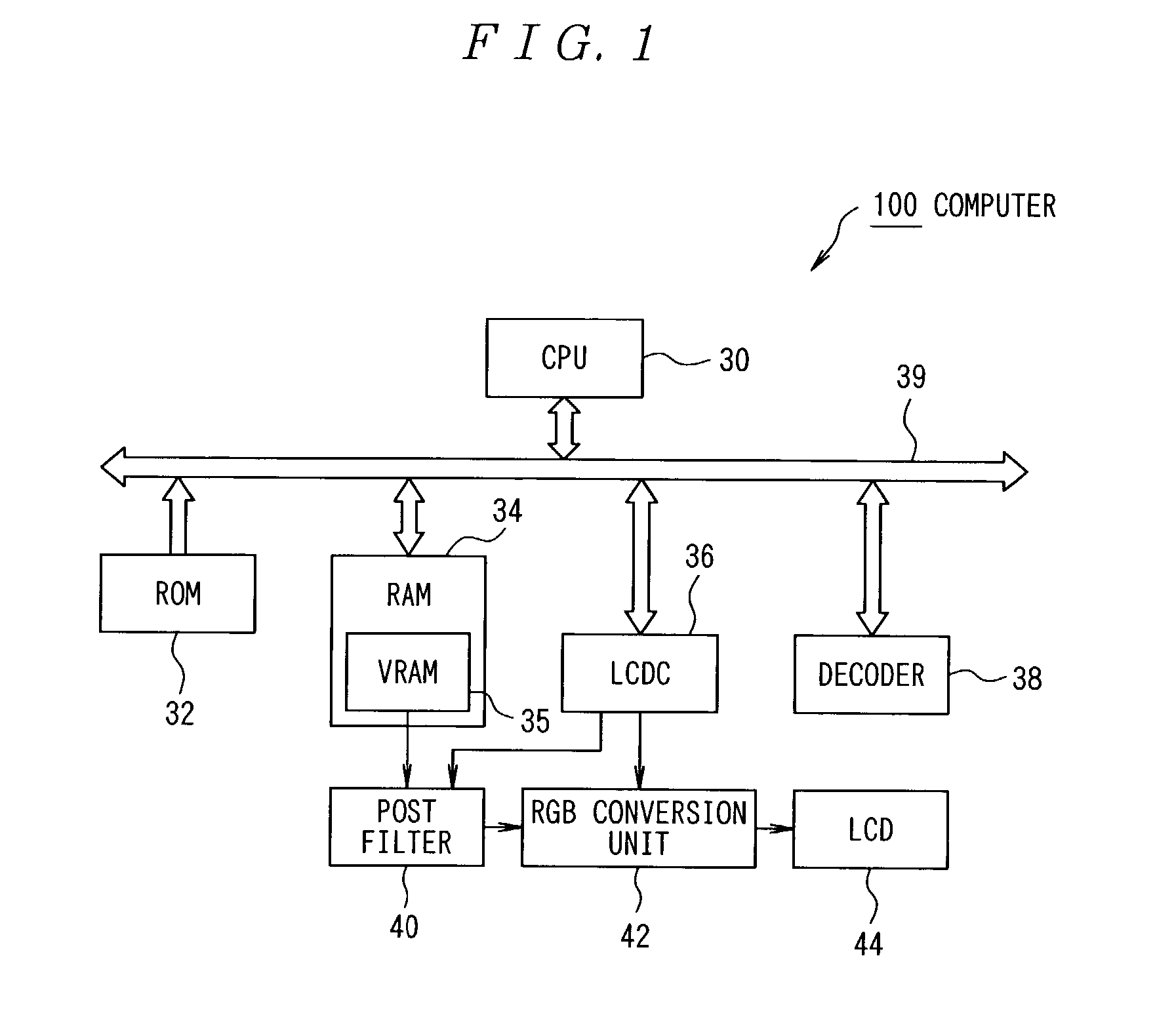Deblocking and deringing apparatus, program and method
a technology of deringing apparatus and deringing machine, which is applied in the field of deblocking and deringing apparatus, can solve the problems of deteriorating picture quality, blurring noise around the border, and noise generated on parts having a large luminance difference from the surrounding parts, so as to achieve effective screen effect, simplify filter processing, and increase the effect of speed
- Summary
- Abstract
- Description
- Claims
- Application Information
AI Technical Summary
Benefits of technology
Problems solved by technology
Method used
Image
Examples
first embodiment
[0172]Described below is the operation of the present invention.
[0173]First, the case in which the deblock filter processing is performed is described below by referring to an example of performing the deblock filter processing on each pixel of the pixel array PG1 shown in FIG. 1.
[0174]When the deblock filter processing is performed on each pixel of the pixel array PG1, the processes in steps S100, S102, S200, and S202 are first performed, and then the address of the pixel array PG1 in the area of the upper right portion of the block is computed, the pixel data required in the operation in the horizontal direction and the pixel data required in the operation in the vertical direction in the pixel array PG1 are collectively read to the buffer according to the computed address of the pixel array PG1. Since the pixel array PG1 is in the third row from the top, the pixel data including a total of 17 pixels, that is, the four right-to-left contiguous pixels from the upper right pixel in...
second embodiment
[0229]The operations are described below by referring to FIGS. 12 and 13. FIG. 12 shows the case in which the pixel values v1 to v8 are rearranged for operations. FIG. 13 is a bar graph showing the value of each pixel of the pixel array PG1.
[0230]First, the deblock filter processing is described below by referring to an example of performing the deblock filter processing on each pixel of the pixel array PG1 shown in FIG. 1.
[0231]When the deblock filter processing is performed on each pixel of the pixel array PG1, the processes in steps S200, S202, S230 to S238 are performed, the necessary pixel data for the operations in the horizontal direction and the necessary pixel data for the operations in the vertical direction relating to the pixel array PG1 are collectively read to the buffer according to the address of the pixel array PG1, and the pixel values v1 to v5 are read to s(0) to s(4) respectively as shown in FIG. 12(A).
[0232]After step S500, it is determined whether or not the d...
third embodiment
[0263]The operations are described below by referring to FIGS. 17. FIG. 17 is a bar graph showing the value of each pixel of the pixel array PG1.
[0264]First, the deblock filter processing is described below by referring to an example of performing the deblock filter processing on each pixel of the pixel array PG1 shown in FIG. 1.
[0265]When the deblock filter processing is performed on each pixel of the pixel array PG1, the processes in steps S200, S202, S260 to S268 are performed, the necessary pixel data for the operations in the horizontal direction and the necessary pixel data for the operations in the vertical direction relating to the pixel array PG1 are collectively read to the buffer according to the address of the pixel array PG1, and the pixel values v1 to v5 are read to s(4) to s(0) respectively as shown in FIG. 12(B).
[0266]After step S530, it is determined whether or not the deblock filter processing is performed for s(1). That is, if the absolute value of the difference...
PUM
 Login to View More
Login to View More Abstract
Description
Claims
Application Information
 Login to View More
Login to View More - R&D
- Intellectual Property
- Life Sciences
- Materials
- Tech Scout
- Unparalleled Data Quality
- Higher Quality Content
- 60% Fewer Hallucinations
Browse by: Latest US Patents, China's latest patents, Technical Efficacy Thesaurus, Application Domain, Technology Topic, Popular Technical Reports.
© 2025 PatSnap. All rights reserved.Legal|Privacy policy|Modern Slavery Act Transparency Statement|Sitemap|About US| Contact US: help@patsnap.com



